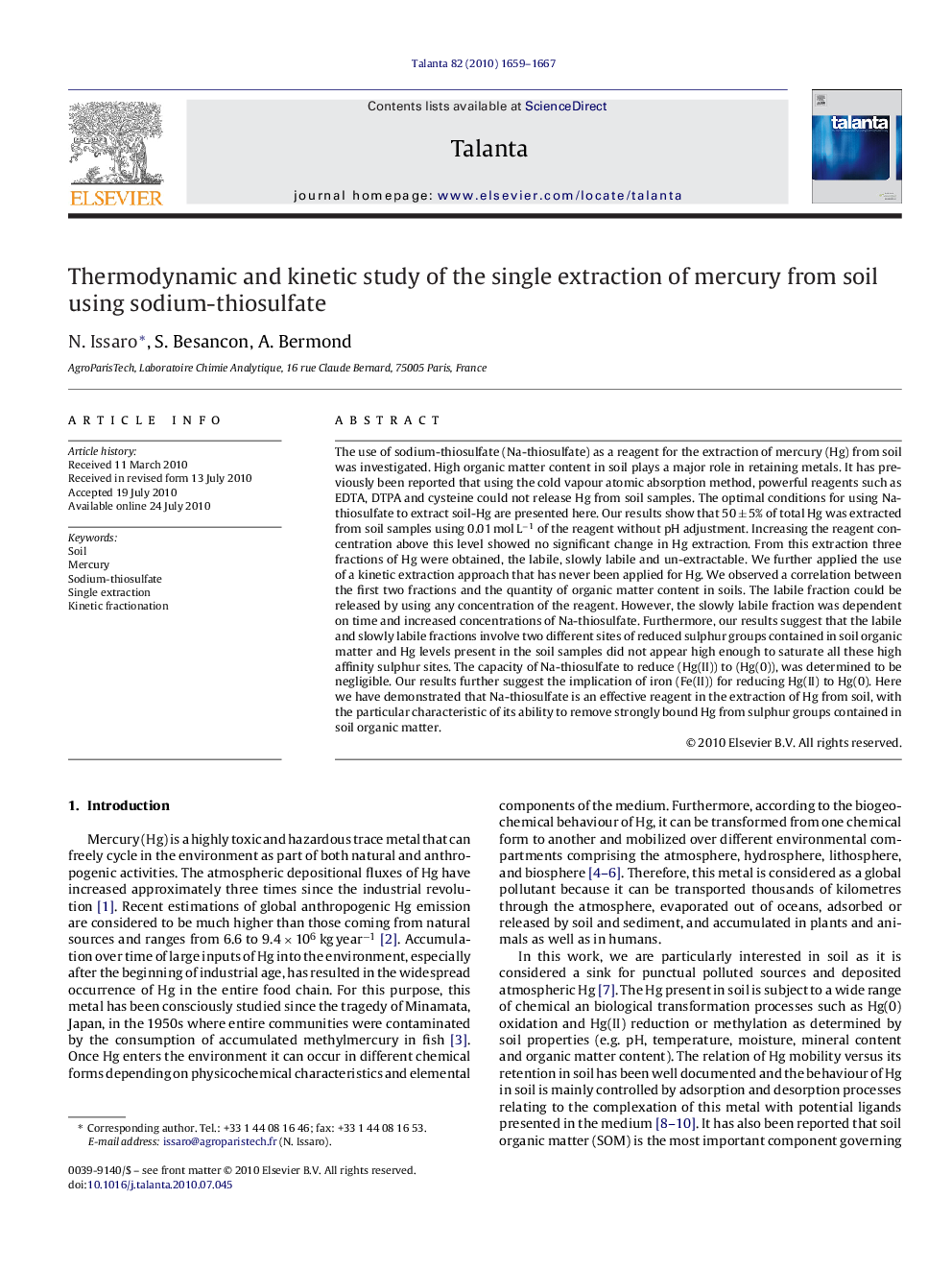| Article ID | Journal | Published Year | Pages | File Type |
|---|---|---|---|---|
| 1246183 | Talanta | 2010 | 9 Pages |
The use of sodium-thiosulfate (Na-thiosulfate) as a reagent for the extraction of mercury (Hg) from soil was investigated. High organic matter content in soil plays a major role in retaining metals. It has previously been reported that using the cold vapour atomic absorption method, powerful reagents such as EDTA, DTPA and cysteine could not release Hg from soil samples. The optimal conditions for using Na-thiosulfate to extract soil-Hg are presented here. Our results show that 50 ± 5% of total Hg was extracted from soil samples using 0.01 mol L−1 of the reagent without pH adjustment. Increasing the reagent concentration above this level showed no significant change in Hg extraction. From this extraction three fractions of Hg were obtained, the labile, slowly labile and un-extractable. We further applied the use of a kinetic extraction approach that has never been applied for Hg. We observed a correlation between the first two fractions and the quantity of organic matter content in soils. The labile fraction could be released by using any concentration of the reagent. However, the slowly labile fraction was dependent on time and increased concentrations of Na-thiosulfate. Furthermore, our results suggest that the labile and slowly labile fractions involve two different sites of reduced sulphur groups contained in soil organic matter and Hg levels present in the soil samples did not appear high enough to saturate all these high affinity sulphur sites. The capacity of Na-thiosulfate to reduce (Hg(II)) to (Hg(0)), was determined to be negligible. Our results further suggest the implication of iron (Fe(II)) for reducing Hg(II) to Hg(0). Here we have demonstrated that Na-thiosulfate is an effective reagent in the extraction of Hg from soil, with the particular characteristic of its ability to remove strongly bound Hg from sulphur groups contained in soil organic matter.
